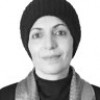From Mongol Devastation To Shiite Theocracy: The Betrayal Of Mehr And The Path To Restoration – OpEd
The Mongol invasion of Iran in the 13th century marked a profound rupture in the historical continuity of Iranian civilization. Beyond the physical destruction of cities and the decimation of populations, the psychological and institutional trauma of Mongol rule fundamentally altered Iran’s political trajectory.
The administrative structures imposed by the Mongols—characterized by centralized absolutism, coercion, and rigid hierarchy—were antithetical to the indigenous traditions of Mehr, which had historically guided Iranian governance through principles of compassion, communal responsibility, and pragmatic inclusivity (Briant, 2002).
As Mongol hegemony waned, Iran did not revert to its pre-invasion civilizational ethos but instead institutionalized new forms of totalitarian rule. By the early 16th century, the Safavid dynasty emerged, modeling its authority not on Iran’s native traditions but on the centralized despotism of its Mongol and Turkic predecessors (Savory, 2007). This new political order did not seek to restore the principles of Mehr but instead established a theocratic state rooted in superstition, ideological absolutism, and a militant cult of martyrdom.
Under the Safavid dynasty (1501–1736), Iran underwent a radical transformation, becoming the epicenter of Twelver Shiism, a sect that had previously been marginal within the broader Islamic world. To consolidate their power, the Safavid rulers engaged in one of the most extensive campaigns of forced religious conversion in history (Newman, 2006). Shiism was imposed as the official creed and those who resisted—whether Sunnis, Sufis, Zoroastrians, or other heterodox communities—were subject to systematic persecution, expulsion, or execution.
Shah Ismail I (r. 1501–1524), the founder of the dynasty, sought to eradicate Sunni influence by violently purging religious scholars and communities. His successors, particularly Shah Abbas I (r. 1588–1629), further institutionalized this........






















 Toi Staff
Toi Staff Gideon Levy
Gideon Levy Somdeep Sen
Somdeep Sen Belen Fernandez
Belen Fernandez Tafi Mhaka
Tafi Mhaka Tarik Cyril Amar
Tarik Cyril Amar Rachel Marsden
Rachel Marsden Stephanie A. Sarkis Ph.d
Stephanie A. Sarkis Ph.d Dr Ramzy Baroud
Dr Ramzy Baroud Sabine Sterk
Sabine Sterk Ghada Ageel
Ghada Ageel Muhannad Ayyash
Muhannad Ayyash Sarah Tuttle-Singer
Sarah Tuttle-Singer John Nosta
John Nosta
